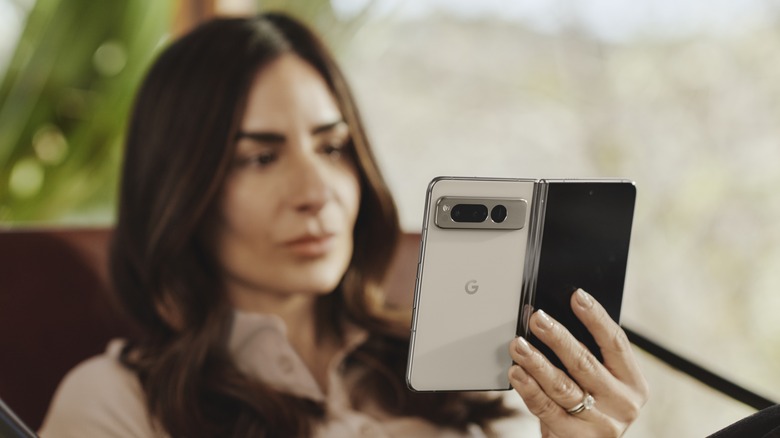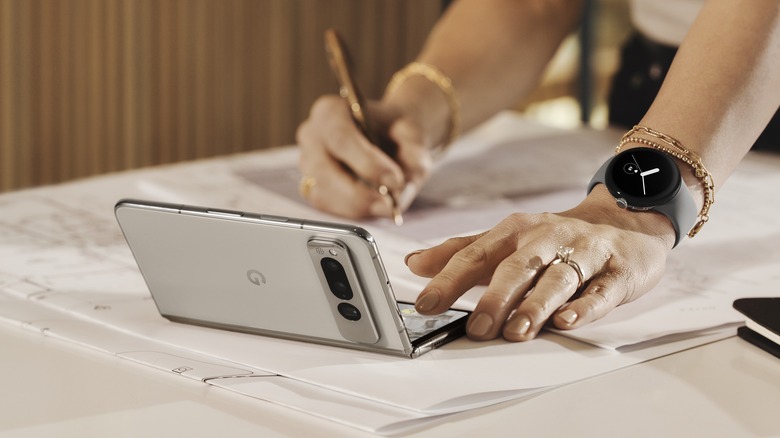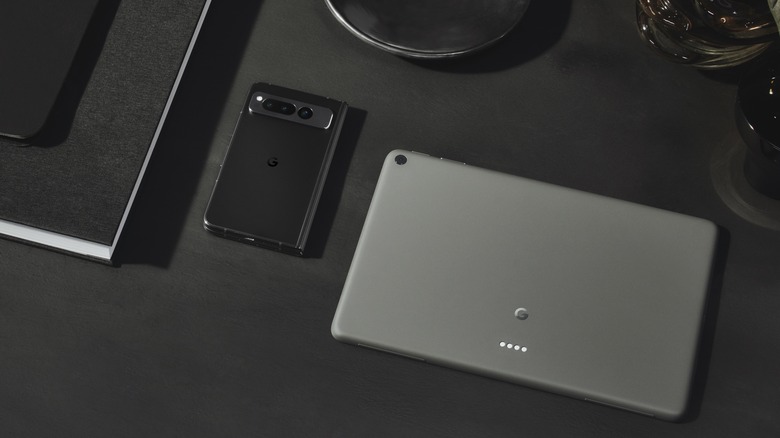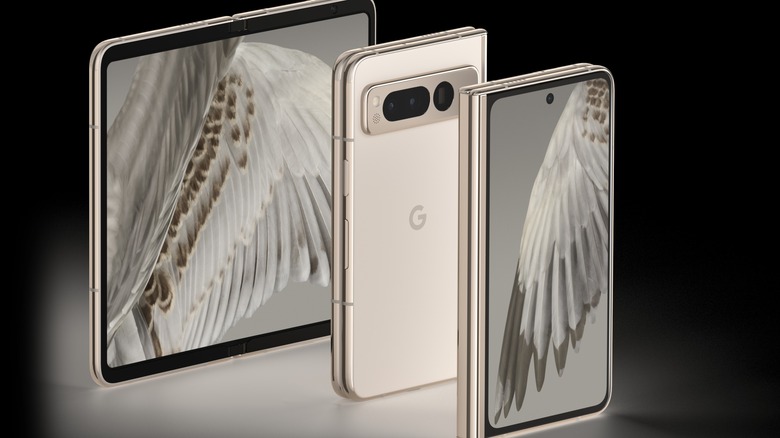Pixel Fold: How Google's First Foldable Phone Stacks Up To The Galaxy Z Fold 4
In 2019, Samsung bulldozed its way into the world of foldable phones with the Galaxy Z Fold. Since then, the Korean smartphone major has dominated the foldable space and diversified into flip-style foldable phones. The only competition to Samsung in the foldable space came from Motorola's Razr foldable series. And while there have been excellent foldable phones from Chinese brands like Huawei, Honor, OPPO, and Xiaomi, most foldables from these companies were restricted to select markets. None officially made it to the U.S.
Google's decision to launch a foldable smartphone of its own — the Google Pixel Fold — is changing all that. For the first time, Samsung must contend with serious competition from a formidable rival. Going by what we know about the Pixel Fold, the device looks like a significant attempt from Google with the potential to disrupt the foldable space. And while a glance at the spec sheet does reveal some chinks in the Pixel Fold's armor — especially when it comes to the processor — there is no denying that the Pixel Fold has the potential to more than make up for this flaw with its supposedly better "Pixel-grade" cameras.
As things stand now, the Samsung Galaxy Z Fold 4 is no longer the default choice for anyone seeking a full-sized foldable phone. The addition of the Google Pixel Fold to this mix has spiced up things in the foldable space, given that both the devices retail for near-identical price tags starting at approximately $1800.
Google Pixel Fold Vs. Samsung Galaxy Z Fold 4: How different are the displays?
Samsung's vertically-folding form factor has become the standard for full-fledged foldable devices. Google is the newest company to take inspiration from this tried and tested format on the Pixel Fold.
This means that the Pixel Fold has a vertically folding 7.6-inch inner display with nearly the same pixel density as the folding panel of the Galaxy Z Fold 4. However, the Pixel Fold is the winner by a narrow margin, thanks to its slightly higher (2208 x 1840 pixels) resolution than the Galaxy Z Fold 4's 2176 x 1812 pixel internal display. In addition, the Pixel Fold's internal display claims an HDR brightness of 1000 nits, with the peak value going up to 1450 nits.
At 5.8 inches, the Pixel Fold's external display is smaller than the 6.2-inch panel on the Fold 4. If you will predominantly use the external display, you need to consider this before purchasing. Aside from the smaller size, the Pixel Fold's cover display matches the Fold 4's external panel in most aspects. It has exceptional brightness levels (1200 nits) and a peak brightness of 1550 nits. The internal and external panels on both these devices support 120Hz refresh rate as well.
While both devices compare well regarding display tech and quality, the Galaxy Z Fold has an ace up its sleeve thanks to support for the S Pen — the Pixel Fold doesn't have an equivalent option.
Google Pixel Fold Vs. Samsung Galaxy Z Fold 4: The hardware specs
Google has used the tried and tested Tensor G2 chip on the Pixel Fold. This is the same chipset that powers Google's latest generation of non-folding Pixel phones, including the Pixel 7, Pixel 7 Pro, and Pixel 7a. While this chip offers excellent performance, it falls short of the Galaxy Z Fold 4's Qualcomm Snapdragon 8 Plus Gen 1 chip. Besides being built on an older 5nm manufacturing process, the Tensor G2 is far behind its Snapdragon Counterpart on the graphics front. In simpler words, on a device as expensive as the Pixel Fold, it is not entirely wrong on our part to expect better hardware prowess.
While both these foldables are evenly matched regarding RAM (12GB), the Galaxy Z Fold 4 offers consumers the option to buy a 1TB phone variant. In comparison, the Google Pixel Fold tops out at 512GB.
While the Google Pixel Fold gets a larger battery (4827 mAh) compared to the Galaxy Z Fold's 4400 mAh battery, the Tensor chip is infamous for its battery-hogging nature. It would be interesting to see how much of a difference the Pixel Fold's battery capacity advantage makes in real-life conditions.
When you run out of battery, the Pixel offers slightly faster charging speeds (30W wired) compared to the 25W fast charging support on the Galaxy Z Fold 4. While both devices support wireless charging, Samsung has confirmed 15W charging speeds with any Qi-supported wireless fast charger.
Google Pixel Fold Vs. Samsung Galaxy Z Fold 4: How good are the cameras?
Given Google's excellent record with cameras on Pixels, a lot is riding on the Pixel Fold's cameras. In terms of hardware, it doesn't disappoint. The device features three cameras at the rear, including a 48MP primary camera with OIS mated to a lens with f/1.7 aperture, a secondary camera with a 10.8MP sensor and 121-degree ultrawide lens, and a 10.8MP sensor that acts as a dedicated telephoto camera with support for 5x optical zoom and 20X Super Res Zoom.
The Pixel Fold also gets front-facing cameras for the external and internal displays. While the inner camera uses an 8MP sensor, the external camera gets a 9.5MP sensor mated to an f/2.2 lens.
In comparison, the Galaxy Z Fold 4 has cameras consisting of a 50MP, f/1.8 primary camera with PDAF and OIS, a 10MP telephoto camera that supports 3x optical zoom with OIS and PDAF support, and a 12MP ultrawide sensor with f/2.2 aperture. The Fold 4's Achilles heel is the 4MP under-display camera housed within the folding display. On the other hand, the external front-facing camera uses a 10MP sensor mated to an f/2.2 lens.
While the camera hardware on these devices seems evenly matched, given Google's history with Pixel's computational photography, there is a good chance that the Pixel Fold may blow Samsung out of the water. We will reserve a final judgment post a detailed review of the Pixel Fold.



